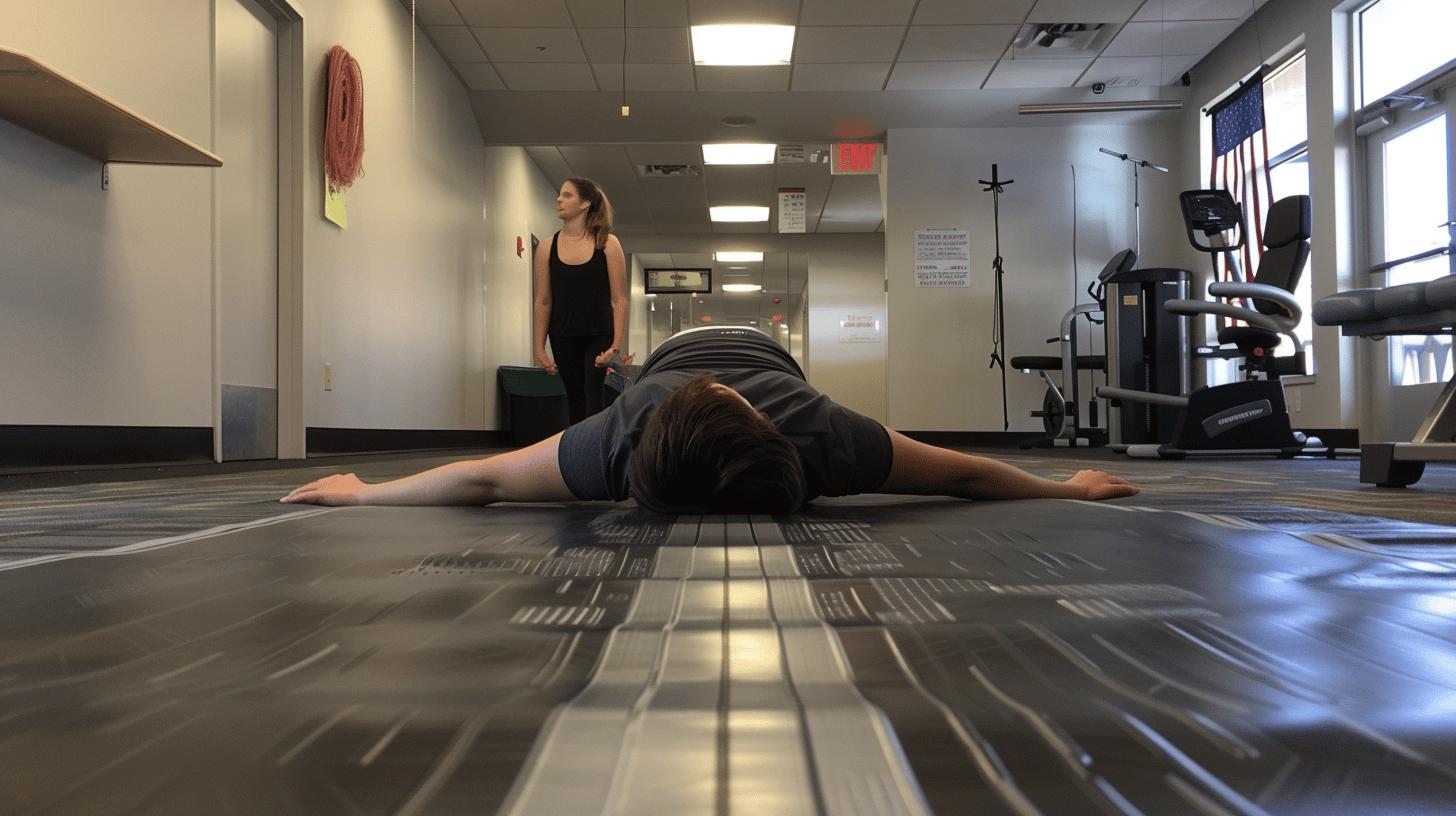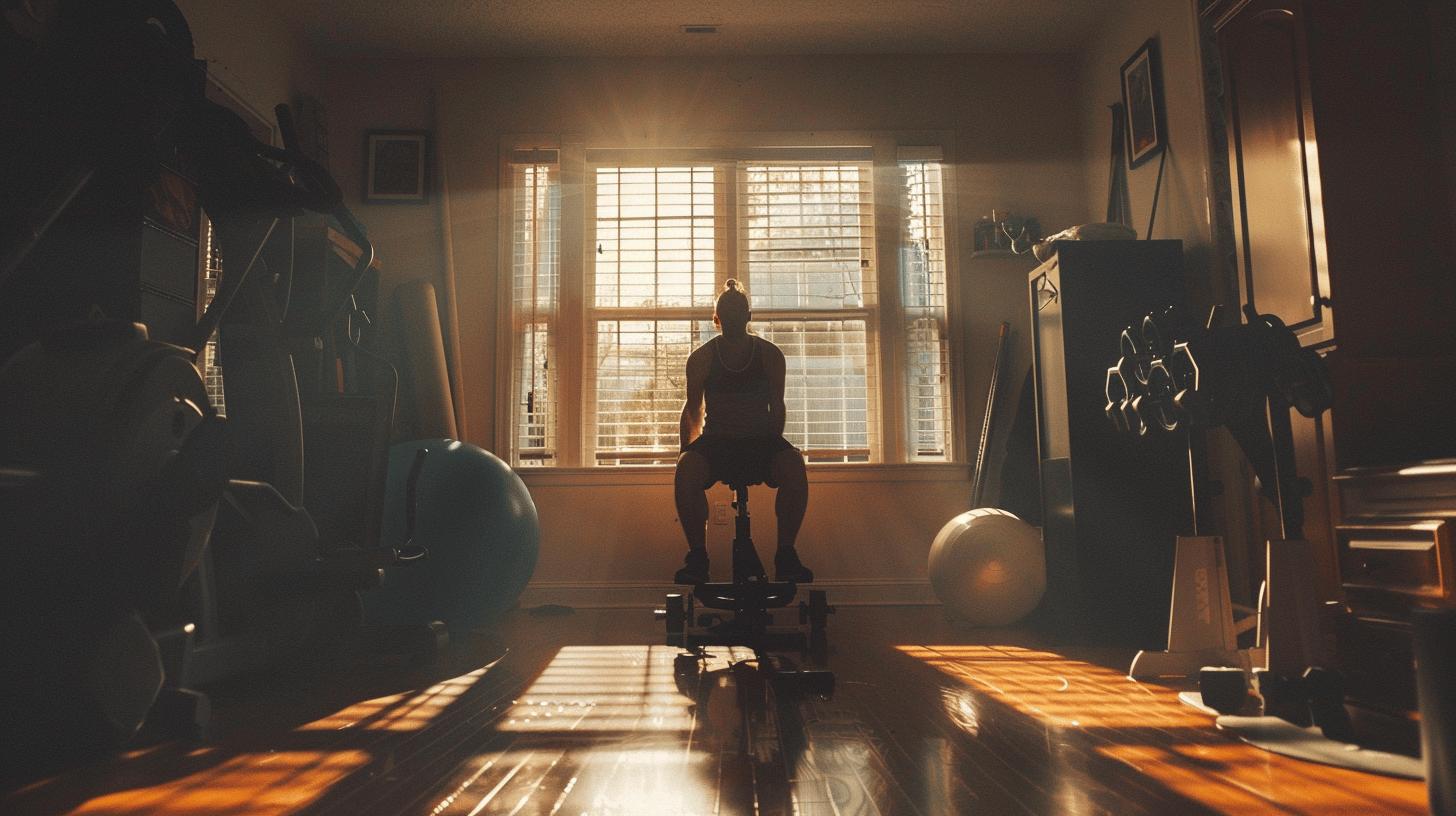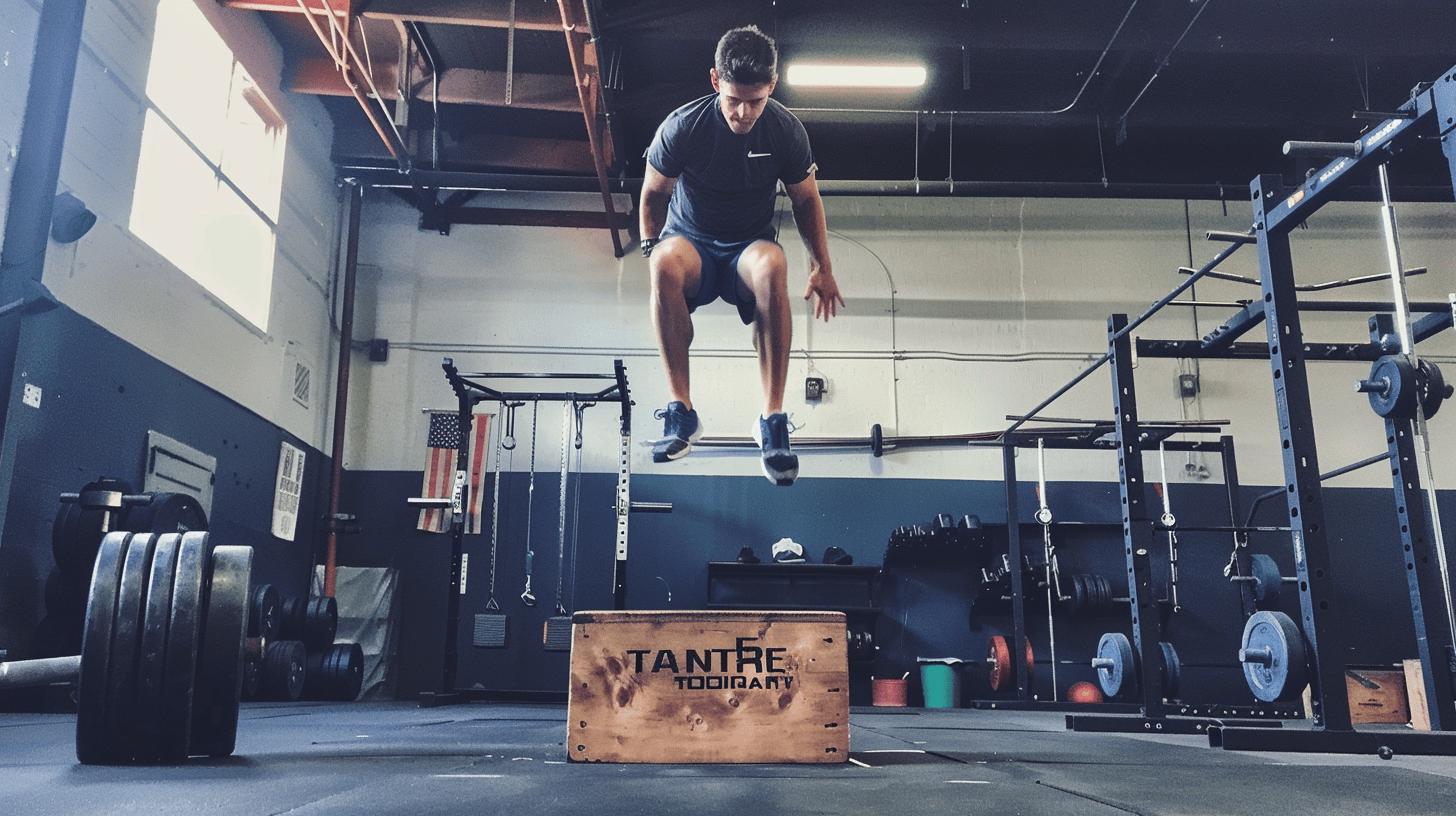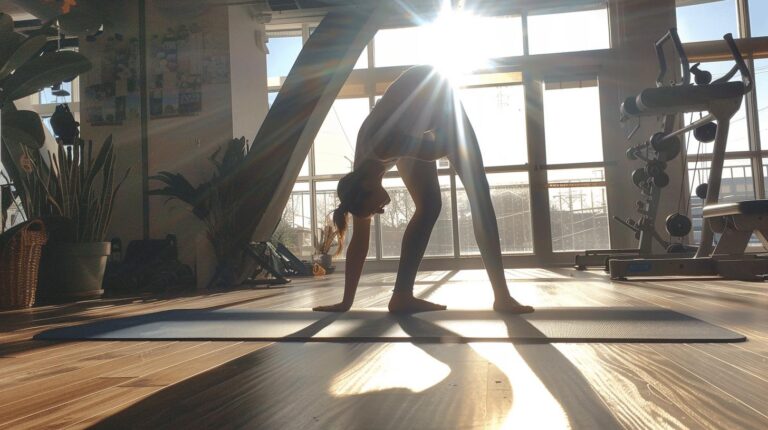Rebuilding knee strength after an ACL injury can seem daunting, but targeted exercises can expedite recovery and enhance overall stability. This article compiles highly effective ACL strengthening exercises that require minimal equipment yet yield significant benefits. These exercises, such as Heel Slides, Quad Sets, and Straight Leg Raises, lay the foundation for robust knee function, enabling a return to daily activities and athletic pursuits. Structured to guide you through proper techniques and repetitions, this guide emphasizes precision and consistency, essential for optimal results. Let's delve into these practical and powerful ACL exercises to fortify your knee and support your recovery journey.
Effective ACL Strengthening Exercises
Heel Slides
Heel slides are essential for regaining knee mobility and strength.
Instructions:
- Begin lying down with your legs straight.
- Slide your heel towards your buttocks while keeping your foot on the floor.
- Return to the starting position.
Perform 10-15 repetitions.
Quad Sets
Quad sets help in activating and strengthening the quad muscles without putting stress on the knee.
Instructions:
- Sit or lie down with your leg straight on the floor.
- Tighten the quad muscles by pushing the back of your knee down towards the floor.
- Hold for 5 seconds and then release.
Perform 10-15 repetitions.
Straight Leg Raises
Straight leg raises target the quadriceps and hip flexors, providing stability to the knee joint.
Instructions:
- Lie flat on your back with one leg bent and the other leg straight.
- Raise the straight leg to the height of the bent knee, keeping it straight.
- Lower it back slowly.
Perform 3 sets of 10 repetitions.
Frequency Recommendations
For optimal results, perform these exercises:
- Heel Slides: Daily
- Quad Sets: Daily
- Straight Leg Raises: 3 times per week
Necessary Equipment
No special equipment is required for these exercises. A mat or soft surface is recommended for comfort.
By incorporating these effective ACL strengthening exercises into your routine, you can improve knee stability and function, aiding in both rehabilitation and prevention of injuries.
ACL Rehabilitation Protocol: Phases Explained

Phase 1: Early Rehabilitation
During the initial phase of ACL rehabilitation, the focus is on reducing pain and swelling while regaining knee extension and flexion.
Key Goals:
- Pain and swelling reduction
- Regaining knee extension and flexion
Exercises:
- Heel Props: Lie flat and place a rolled towel under the heel to passively extend the knee. Hold for 10 minutes.
- Quad Sets: Tighten the quad muscles with the leg straight on the floor, hold for 5 seconds, and release. Perform 10-15 repetitions.
- Straight Leg Raises: Lie flat and raise one leg while keeping it straight. Perform 3 sets of 10 repetitions.
Phase 2: Mid Rehabilitation
The second phase shifts towards muscle strengthening and movement training.
Key Goals:
- Muscle strengthening
- Movement training
Exercises:
- Squat Progressions: Start with half squats and gradually progress to deeper squats. Perform 3 sets of 10 repetitions.
- Step-Down Progressions: Step down from a platform or step, ensuring controlled movement. Perform 3 sets of 10 repetitions per leg.
Phase 3: Late Rehabilitation
The final phase focuses on fitness reconditioning and preparing for a return to functional activities.
Key Goals:
- Fitness reconditioning
- Return to functional activities
Exercises:
- Single-Leg Squats: Perform squats on one leg to improve stability and strength. Perform 3 sets of 10 repetitions per leg.
- Dynamic Balance Exercises: Include activities like standing on one leg while performing various movements. Perform 3 sets of 30 seconds each leg.
Phase Goals Key Exercises Phase 1 Pain and swelling reduction; regaining knee extension and flexion Heel Props, Quad Sets, Straight Leg Raises Phase 2 Muscle strengthening; movement training Squat Progressions, Step-Down Progressions Phase 3 Fitness reconditioning; return to functional activities Single-Leg Squats, Dynamic Balance Exercises
Preventive ACL Exercises
Preventive ACL exercises are crucial for strengthening the knee and minimizing the risk of injury. Here are some key exercises:
Single-Leg Balance
Single-leg balance exercises help improve knee stability and proprioception.
Instructions:
- Stand on one leg.
- Hold the position for 30 seconds.
- Switch legs and repeat.
Perform 3 sets.
Lateral Band Walks
Lateral band walks target the hip abductors and lateral stabilizers of the knee.
Instructions:
- Place a resistance band around your thighs.
- Bend your knees slightly and step sideways.
- Perform 10 steps in one direction, then return.
Perform 3 sets of 10 steps each side.
Jumping Lunges
Jumping lunges enhance dynamic stability and strength in the knee.
Instructions:
- Begin in a lunge position.
- Jump and switch legs mid-air, landing in a lunge position with the opposite leg forward.
- Ensure a soft landing to reduce impact on the knee.
Perform 3 sets of 10 reps.
Incorporating these preventive ACL exercises into your routine can significantly bolster knee strength and reduce the likelihood of injuries.
| Exercise | Instructions | Sets/Reps |
|---|---|---|
| Single-Leg Balance | Stand on one leg, hold for 30 seconds, switch legs. | 3 sets |
| Lateral Band Walks | Place a band around thighs, step sideways for 10 steps, return. | 3 sets of 10 steps each side |
| Jumping Lunges | Begin in a lunge, jump and switch legs mid-air, land softly. | 3 sets of 10 reps |
Post-ACL Surgery Strengthening Exercises

Heel Raises
Heel raises are effective post-ACL surgery exercises to strengthen the calf muscles and improve ankle stability.
Instructions:
- Stand with your feet hip-width apart.
- Raise your heels off the ground, balancing on the balls of your feet.
- Lower your heels back to the starting position.
Perform 3 sets of 15 repetitions.Wall Sits
Wall sits help in strengthening the quadriceps without putting excessive strain on the knee joint.
Instructions:
- Stand with your back against a wall, feet shoulder-width apart.
- Slide down the wall into a seated position, ensuring your thighs are parallel to the ground.
- Hold this position for 30 seconds.
Perform 3 sets.Step-Ups
Step-ups are crucial for building strength and stability in the knee and surrounding muscles.
Instructions:
- Stand in front of a platform or step.
- Step onto the platform with one foot, followed by the other foot.
- Step back down with the same foot that led first.
Perform 3 sets of 10 repetitions for each leg.Frequency Recommendations
For optimal recovery and strengthening, follow these frequency recommendations:
- Heel Raises: Perform daily.
- Wall Sits: Perform 3 times per week.
- Step-Ups: Perform 3 times per week.
Necessary Equipment
Minimal equipment is required for these exercises. You will need:
- A sturdy platform or step for step-ups.
- A wall for wall sits.
Incorporating these post-ACL surgery exercises into your rehabilitation routine can significantly improve knee strength and stability, facilitating a smoother recovery process.
Common Mistakes in ACL Rehab and How to Avoid Them
Not Following Strength and Conditioning Principles
Question: What are the consequences of not following strength and conditioning principles during ACL rehab?
Answer: Failing to adhere to these principles can lead to inadequate muscle recovery and increased risk of re-injury.
Solution: Stick to a structured rehab program that gradually increases in intensity. Ensure a balanced approach that includes both strength and conditioning exercises tailored to your recovery phase.
Ignoring Neurocognitive Aspects
Question: Why is it important to consider neurocognitive aspects during ACL rehab?
Answer: Ignoring neurocognitive aspects can result in poor motor control and coordination, affecting overall knee stability.
Solution: Integrate exercises that enhance proprioception and balance. Activities such as single-leg balance drills and dynamic movements can help in retraining the brain to control the knee joint effectively.
Rushing or Overcomplicating Rehab
Question: What are the risks of rushing or overcomplicating the ACL rehab process?
Answer: Rushing can lead to incomplete healing and increased risk of setbacks. Overcomplicating the rehab can cause confusion and improper execution of exercises.
Solution: Follow a phased approach to rehabilitation, ensuring that each stage of recovery is adequately addressed before moving on to the next. Keep exercises simple and focus on correct form and gradual progression.
| Common Mistake | Solution |
|---|---|
| Not Following Strength and Conditioning Principles | Stick to a structured rehab program, gradually increasing in intensity. |
| Ignoring Neurocognitive Aspects | Incorporate proprioception and balance exercises. |
| Rushing or Overcomplicating Rehab | Follow a phased approach and focus on proper form. |
Advanced ACL Strengthening Exercises

Box Jumps
Box jumps are an excellent way to enhance explosive strength and stability in the knee.
Instructions:
- Stand in front of a sturdy box or platform.
- Bend your knees slightly and jump onto the box, landing softly with both feet.
- Step down carefully and repeat.
Frequency:
Perform 3 sets of 10 repetitions.
Equipment Needed:
- A sturdy box or platform.
Deadlifts
Deadlifts are essential for building overall lower body strength, including the muscles supporting the ACL.
Instructions:
- Stand with your feet shoulder-width apart, holding a barbell or dumbbells in front of you.
- Bend at your hips and knees, lowering the weights while keeping your back straight.
- Return to the standing position by extending your hips and knees.
Frequency:
Perform 3 sets of 10 repetitions.
Equipment Needed:
- Barbell or dumbbells.
Bulgarian Split Squats
Bulgarian split squats focus on unilateral leg strength, which is crucial for knee stability.
Instructions:
- Stand a few feet in front of a bench or elevated surface.
- Place one foot behind you on the bench.
- Lower your body by bending the front knee, keeping your back straight.
- Push through the front heel to return to the starting position.
Frequency:
Perform 3 sets of 10 repetitions per leg.
Equipment Needed:
- A bench or elevated surface.
Detailed Exercise Benefits
Question: What are the benefits of incorporating these advanced ACL strengthening exercises into a rehabilitation routine?
Answer: Incorporating advanced ACL strengthening exercises like box jumps, deadlifts, and Bulgarian split squats helps build explosive strength, overall lower body strength, and unilateral leg strength, respectively. These benefits collectively contribute to better knee stability and reduced risk of re-injury.
Explanation: Advanced exercises are designed to push the limits of muscle strength and stability, which are critical for individuals further along in their ACL rehabilitation. By targeting various muscle groups and movement patterns, these exercises help in creating a robust support system around the knee joint.
ACL Exercises with Resistance Bands
Band Squats
Band squats are effective for targeting the muscles around the knee, including the quadriceps, hamstrings, and glutes.
Instructions:
- Place a resistance band just above your knees.
- Stand with feet shoulder-width apart.
- Lower your body into a squat position, ensuring your knees do not extend past your toes.
- Return to the standing position.
Perform 3 sets of 15 repetitions.
Clamshells
Clamshells focus on the hip abductors and external rotators, which play a crucial role in knee stability.
Instructions:
- Lie on your side with your knees bent and a resistance band around your thighs.
- Keep your feet together and open your knees, mimicking the motion of a clamshell.
- Close your knees to return to the starting position.
Perform 3 sets of 15 repetitions on each side.
Monster Walks
Monster walks help strengthen the lateral stabilizers of the knee and improve dynamic stability.
Instructions:
- Place a resistance band around your ankles.
- Bend your knees slightly and maintain a semi-squat position.
- Walk forward for 10 steps, then walk backward for 10 steps.
Perform 3 sets of 10 steps each way.
Benefits of Using Resistance Bands
Question: What are the benefits of using resistance bands for ACL exercises?
Answer: Resistance bands provide adjustable tension, allowing for progressive overload and muscle strengthening without heavy equipment. They enhance muscle activation and improve knee stability and control.
Explanation: Utilizing resistance bands in ACL strengthening exercises offers multiple benefits. They are portable, cost-effective, and versatile, making them suitable for various exercises that target different muscle groups. The bands provide continuous tension throughout the movement, which helps in muscle activation and endurance. This makes them ideal for both rehabilitation and preventive training.
In conclusion, incorporating effective ACL exercises for strengthening is pivotal for both rehabilitation and prevention of knee injuries. Exercises such as heel slides, quad sets, and straight leg raises form the foundation of a robust ACL strengthening regimen. These exercises not only enhance knee stability and function but also significantly contribute to overall lower limb strength. It is crucial to follow a structured and progressive approach to optimize recovery and prevent future injuries. Prioritizing and consistently practicing these exercises will lead to better outcomes and improved knee health.
FAQ
How do I make my ACL stronger?
To make your ACL stronger, engage in exercises like quad sets, heel slides, and straight leg raises. These exercises focus on strengthening muscles around the knee to support the ACL.
What muscles strengthen the ACL?
Strengthening the quadriceps, hamstrings, and gluteal muscles supports the ACL. Exercises like squats, lunges, and leg presses target these muscle groups.
Can ACL heal on by exercise?
Exercise alone cannot heal a torn ACL. It is crucial to consult a healthcare professional for a comprehensive treatment plan, which may include surgery and rehabilitation exercises.
How to strengthen quads with torn ACL?
Strengthen your quads with exercises such as quad sets, straight leg raises, and seated leg lifts. These exercises help maintain muscle strength without stressing the injured ACL.
What are ACL strengthening exercises before surgery?
Effective pre-surgery ACL exercises include:
- Quad Sets: Tighten quad muscles, hold for 5 seconds, and release. Perform 10-15 reps.
- Heel Slides: Slide the heel towards buttocks while lying down. Perform 10-15 reps.
- Straight Leg Raises: Raise one leg while keeping it straight. Perform 3 sets of 10 reps.
What are ACL rehab exercises Phase 3?
Phase 3 includes advanced fitness reconditioning and return to functional activities, such as:
- Single-Leg Squats: Build quad and glute strength.
- Dynamic Balance Exercises: Improve knee stability.
What exercises are safe 1 year post ACL surgery?
Exercises 1 year post ACL surgery focus on strengthening and stability, such as:
- Squats
- Lunges
- Single-Leg Deadlifts
What exercises should be avoided with a torn ACL?
Avoid high-impact and twisting exercises, such as:
- Jumping activities
- Pivoting drills
- Deep squats
What are effective ACL physiotherapy exercises?
Effective ACL physiotherapy exercises include:
- Heel Slides
- Quad Sets
- Straight Leg Raises
What are recommended ACL exercises 6 months post-surgery?
Six months post-surgery, recommended exercises include:
- Step-Ups: Improve strength and balance.
- Heel Raises: Support calf strength.
- Wall Sits: Build endurance in leg muscles.

